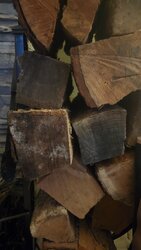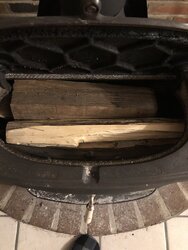RandyBoBandy
Minister of Fire
My house is in southeastern Michigan and I’m burning oak, ash, maple, locust, hickory, cherry, elm
My cabin is 220 miles north in Atlanta MI. I’m burning maple, beech, birch and sometimes hemlock and fir. If I buy firewood up here I get oak, however, I haven’t bought firewood in years. Just been pulling it off the property.
My cabin is 220 miles north in Atlanta MI. I’m burning maple, beech, birch and sometimes hemlock and fir. If I buy firewood up here I get oak, however, I haven’t bought firewood in years. Just been pulling it off the property.




